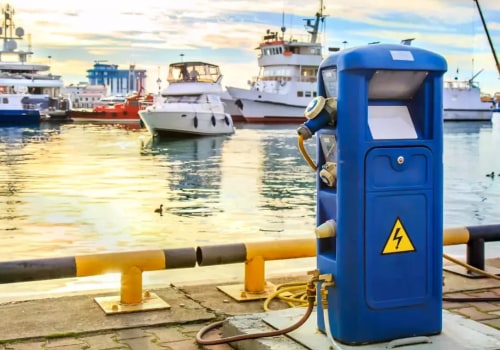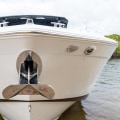Are you looking to ship your yacht internationally but not sure which method of freight is best? Choosing between air and sea freight can be a tough decision, as both have their own advantages and disadvantages. On one hand, air freight offers fast delivery times and is often the preferred choice for time-sensitive shipments. On the other hand, sea freight can be a more cost-effective option for larger shipments and offers the ability to transport a wide range of cargo. In this article, we will delve into the pros and cons of both air and sea freight for yacht shipping.
By the end, you will have a better understanding of which option is best suited for your specific needs. When it comes to shipping your yacht internationally, there are two main options: air freight and sea freight. Both have their advantages and disadvantages, and it's important to understand them before making a decision. First, let's discuss air freight. This method involves transporting your yacht via airplane, which is typically faster than sea freight. This can be a great option if you're on a tight timeline and need your yacht to arrive at its destination quickly.
However, air freight can be quite expensive and may not be the best choice if you're looking to save money. On the other hand, sea freight is a more affordable option but can take significantly longer than air freight. It's important to consider your budget and timeline when choosing between these two options. Additionally, sea freight may require more preparation in terms of securing your yacht for transportation, as it will be exposed to the elements during the journey. This is something to keep in mind when deciding between air and sea freight. In conclusion, when choosing between air and sea freight for your yacht shipping needs, it's important to weigh the pros and cons of each option.
If time is of the essence, air freight may be the best choice despite its higher cost. However, if you have a tighter budget and can afford a longer shipping time, sea freight may be a more suitable option. Ultimately, the decision will depend on your specific needs and priorities.
Cost
When it comes to shipping your yacht internationally, cost is always a major consideration. Air freight is generally more expensive than sea freight, making it a better option for those who prioritize speed and efficiency over budget.However, sea freight offers a more budget-friendly alternative for those who are willing to sacrifice some time for cost savings.
Speed
When it comes to shipping your yacht internationally, speed is an important factor to consider. Air freight is known for its fast delivery times, making it a popular option for those who need their yacht to arrive quickly. However, this speed comes at a higher cost.Air freight
typically takes 1-2 weeks for a yacht to be delivered, depending on the destination.This is significantly faster than sea freight, which can take up to 4-6 weeks.
Sea freight
, on the other hand, is a more affordable option. While it may take longer for your yacht to arrive, the cost savings can be significant. This makes it a popular choice for those who are not in a rush and want to save on shipping costs.Preparation
When it comes to shipping a yacht internationally, preparation is key.And when it comes to sea freight, this is especially true. Unlike air freight, which typically involves loading the yacht onto a cargo plane, sea freight requires the yacht to be transported on a cargo ship. This means that it's important to properly secure and prepare your yacht for the journey. Before shipping your yacht via sea freight, it's essential to thoroughly inspect the vessel and make any necessary repairs. This includes checking for any leaks or structural issues, as well as ensuring all equipment is in good working condition. Additionally, you'll need to properly secure all loose items on the yacht to prevent damage during transit. This can include removing items like antennas, flags, and other decorations, as well as securing furniture and other belongings inside the yacht. In some cases, you may also need to remove certain parts of the yacht, such as the mast or sails, in order to fit it into the shipping container or onto the cargo ship. It's also important to carefully pack and label all items that will be shipped with the yacht.
This will ensure that they are properly accounted for and protected during transit. Overall, sea freight may require more preparation compared to air freight due to the longer journey and different modes of transportation. But by taking the time to properly prepare your yacht, you can ensure a smooth and safe shipping experience. Ultimately, the decision between air and sea freight will depend on your specific needs and priorities. If speed is crucial and cost is not a major factor, air freight may be the way to go. However, if you're looking to save money and don't mind a longer shipping time, sea freight is a viable option.
Whichever method you choose, be sure to do your research and carefully consider all factors before making a decision.










